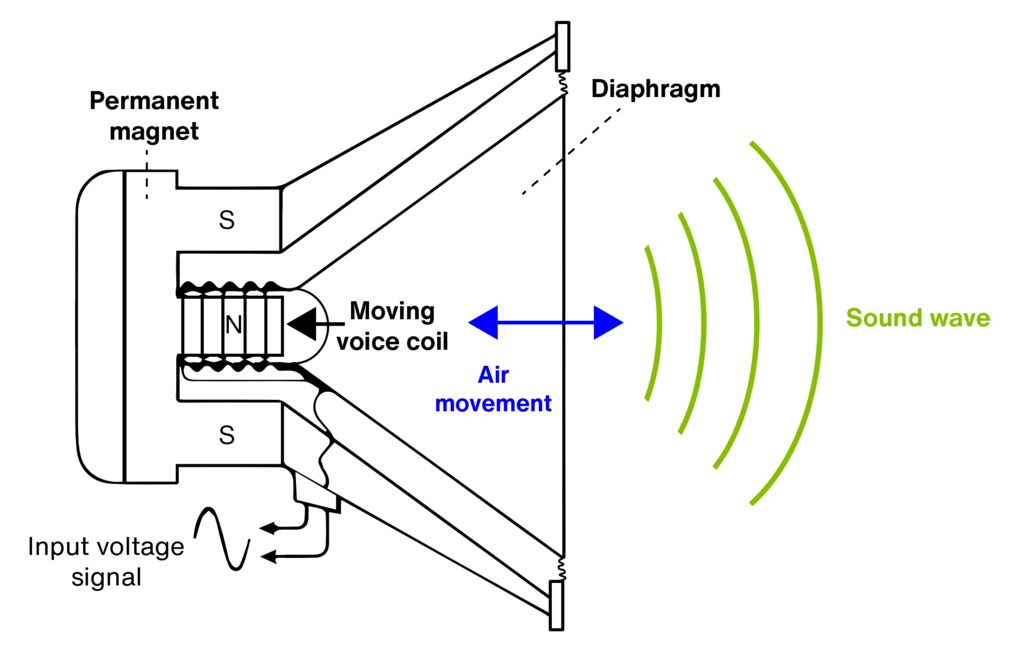
Blog
True love for great sound unites us.
Blog
True love for great sound unites us.
In this blog, you will learn in simple and easy-to-understand terms what electrical impedance is and how it is relevant for headphones.
Let's get started.

Impedance is measured in Ohm, and headphones impedance can vary between 8 and 600 Ohm (or even above in rare cases). Read on and find out what impedance means for headphones.
Even if you haven't attended any electronics classes, you have likely heard about electrical resistance:
If you force a flow of electrons across an object, it will apply resistance to this flow.
This is true for a DC signal (Direct current) where all electrons flow in the same direction.
With AC (Alternate Current) signals, electrons change direction periodically. Here, we talk about impedance and not resistance.
A device with high impedance will "impede" the movement of electrons more than one with low impedance.
In audio applications, we often deal with AC because it's the most convenient way of translating sound into an electrical signal.
Sound is a vibration of particles, and AC is a vibration of electrons.
Most headphones use electrodynamic speakers to generate sound. Like the ones used as woofers in studio monitors.

Inside these speakers, there is a fixed magnet. The coil is suspended where the magnetic field is most potent, and the diaphragm is attached to it. The AC signal representing your favorite song is fed into the coil, and since it is immersed in a magnetic field, it starts moving back and forth. So does the connected diaphragm. This generates the sound waves you hear.
The electrical signal passes through the coil with a particular impedance.
While it is true that a lower impedance would result in more movement of the electrons (=a higher current) and hence would create more movement of the diaphragm, many other factors in a headphone influence how much sound pressure is created.
The strength of the magnetic field, the number of windings in the coil, the total area of the diaphragm, the mass, stiffness, and damping of the diaphragm all affect how much sound pressure is created, and all those parameters are different on every headphone.
So, if you want to know how much sound pressure a given headphone can create, it’s best not to look at the impedance but to look at a parameter called “sensitivity”. Sensitivity in headphone specifications is usually provided in decibels per Volt or in decibels per Milliwatt, and it is a direct measurement of how much sound pressure the headphone produces at a given input level.
Not every audio interface has enough power in its headphone amp to power high-impedance headphones. You need to ensure that your interface works well with your headphones.
So, if you want to calculate whether a given audio interface or headphone amplifier is sufficient to provide enough sound pressure with a given headphone, you can directly calculate this if you know the following things:
You can then enter these parameters into this calculator to see how much peak sound pressure (volume) this combination of audio interface and headphones can produce.
Remember, if you listen to music at an average level of 80-90 dB, individual peaks may be as high as 100-110 dB, and your audio interface + headphones must be capable of reproducing those.
Our two audio interfaces have enough output level to work with the vast majority of headphones. Check them out!
Impedance is measured in Ohm, and headphones impedance can vary between 8 and 600 Ohm (or even above in rare cases).
Headphones between 8 and about 50 Ohm are generally considered low-impedance headphones.
Your typical consumer headphones are primarily low impedance. Low-impedance headphones are easier to drive.
This means that when using a device with low output voltage, you'll be able to reach a higher SPL (Sound Pressure Level), which means a higher volume.
However, there are also a lot of pro-audio headphones that fall into this category.
Headphones with more than 50 Ohm impedance are considered high-impedance headphones.
High-impedance headphones are primarily for pro-audio use and so-called audiophiles because their equipment to listen to audio has much higher output impedance than consumer electronics or USB audio interfaces.
Sensitivity is more important if you want to select headphones based on the volume they can produce. You might have to dig into the spec sheets of the headphone manufacturer, but it lets you know how much sound pressure they can produce.
The sensitivity of headphones can range from 100 to 140 dB/V, and anything over 110 dB/V is generally considered to have high sensitivity.
This means that when using a device with low output voltage (less than 1 Volt), you can achieve close to 110 dB in peak sound pressure level. Remember - peak sound pressure is 10-20 dB higher than average!
So, why are there even high and low-impedance headphones?
Both high and low-impedance headphones exist because of historical context, different technologies, and different applications.
Portable devices such as smartphones or laptops deliver a lower output voltage than professional audio equipment. Therefore, low-impedance headphones are better when connected to those devices because they can reach a high volume despite the low output voltage.
You can try connecting a high-impedance headphone to your laptop. Even at maximum volume, it will not be loud enough.
High-impedance headphones can work with a larger variety of amplifier output impedances without being affected by their sound. In contrast, low-impedance headphones generally require the amplifier to have a low output impedance so they do not affect their sound.

But why do high-impedance headphones even exist?
The gear commonly used in studios does not have the limitations of modern portable devices. In fact, the output voltage of professional audio gear (audio interfaces, headphone amplifiers, etc.) is usually high. So, getting enough volume in your headphones is not a problem at all. Therefore, both high and low-impedance headphones are generally suitable in studio scenarios.
In short, no. Even though impedance impacts sound, we cannot say that high impedance is better than low impedance.
These days, the opposite might be true. The advantage of low-impedance headphones is that you can use them with portable devices without problems.
Suppose you want to connect your headphones to professional audio equipment. You should be fine.
Most modern audio interfaces and headphone amplifiers are designed to work well with high and low-impedance headphones.
Just be careful if you're using headphones with low impedance. As they are easier to drive, you can easily reach a volume that can be dangerous for your ears.
If the output voltage is too high, you could even damage the headphones, so watch out!
Be aware that hearing loss is a real health threat as you can find out in this blog.

What matters is the relationship between the headphone impedance (or load impedance) and the output impedance of the device to which the headphone is connected (or source impedance).
Regardless of the headphone impedance, you can use your headphones with any professional equipment.
As a rule of thumb, the load impedance should be at least 10 times higher than the source impedance. If this condition is not met, it can result in unwanted coloration or bandwidth reduction.
This condition is commonly referred to as voltage matching because if the load impedance is higher than the output impedance, the output voltage will match the desired value.
How can I know if I am in impedance-matching conditions?
Most professional equipment is designed to have low enough output impedance to meet these conditions regardless of the headphones connected to it.
If the output impedance of your device's headphone output is less than a tenth of your headphone impedance, then you are in voltage-matching conditions.
Sometimes, you will find sensitivity in headphone specifications instead of the impedance.
The two topics are related.
Sensitivity is measured in dB SPL/V @ 1 kHz (or sometimes in dB SPL/mW @ 1 kHz), which means that at a specific voltage, the headphones can generate a certain SPL at 1 kHz.
For example, a headphone with a sensitivity of 105 dB SPL/V can generate 105 dB SPL at 1 kHz if fed with a signal of 1 V.
The higher the sensitivity, the higher the SPL at a specific voltage. Therefore, the louder the headphones will be.